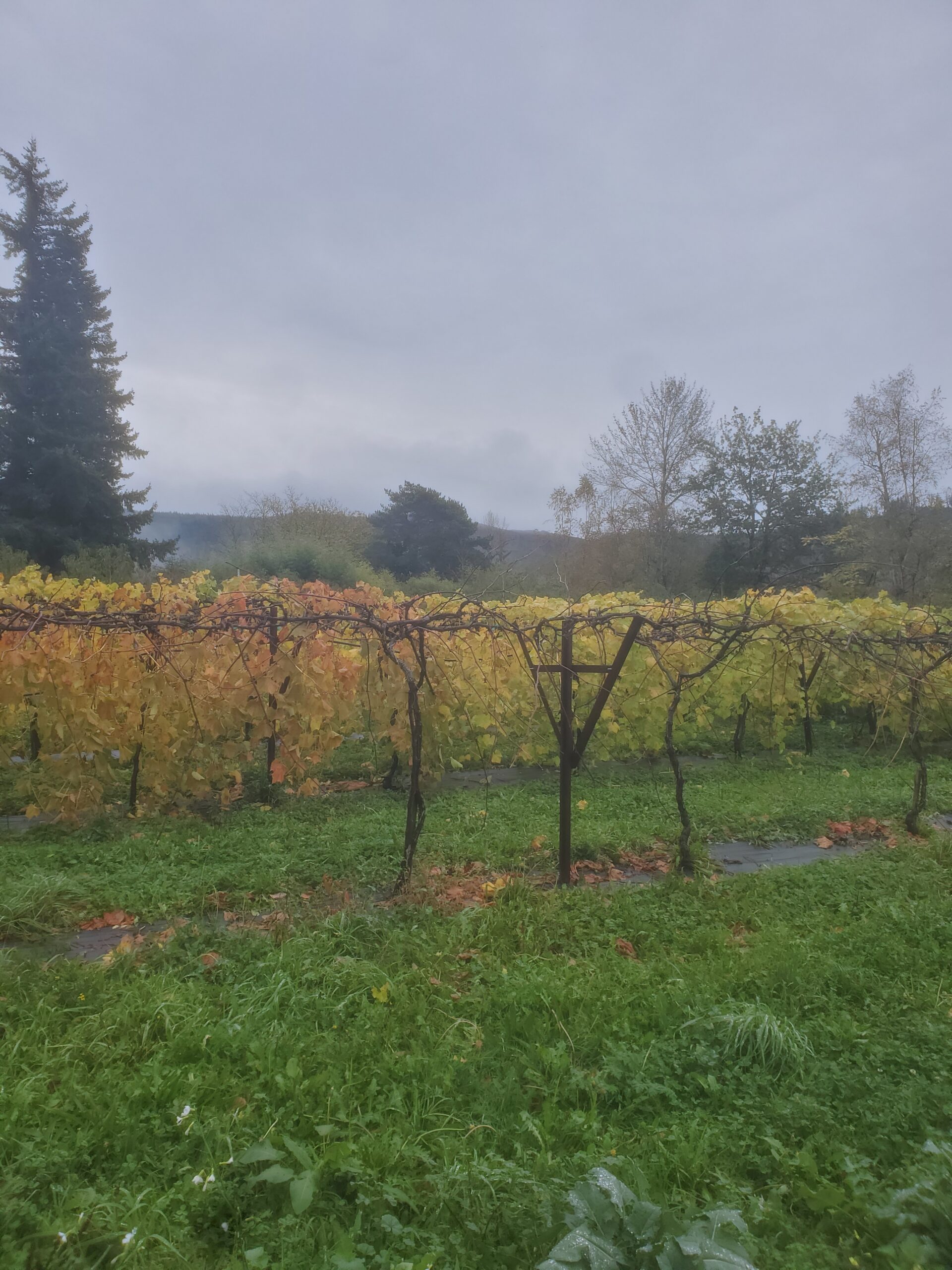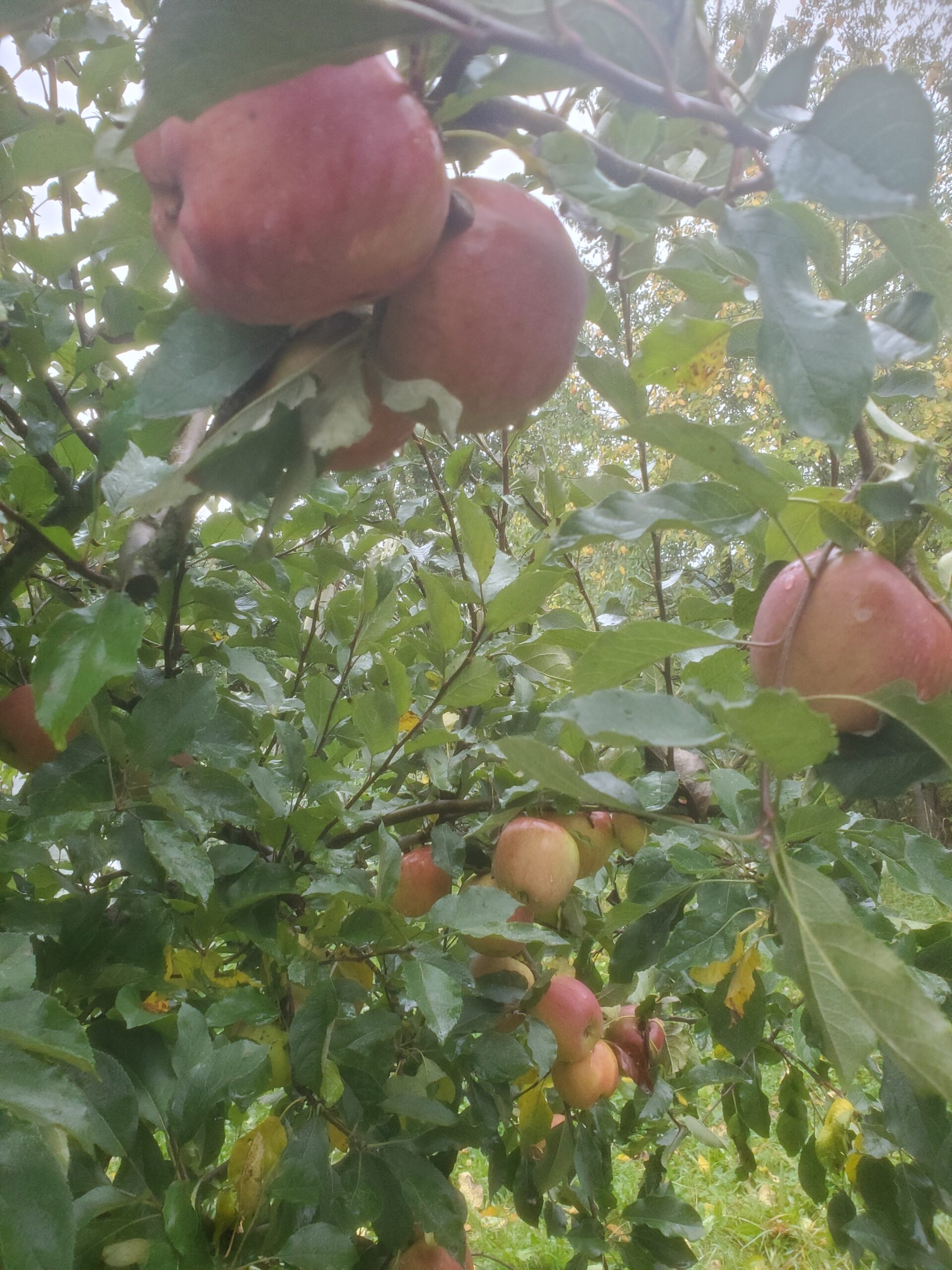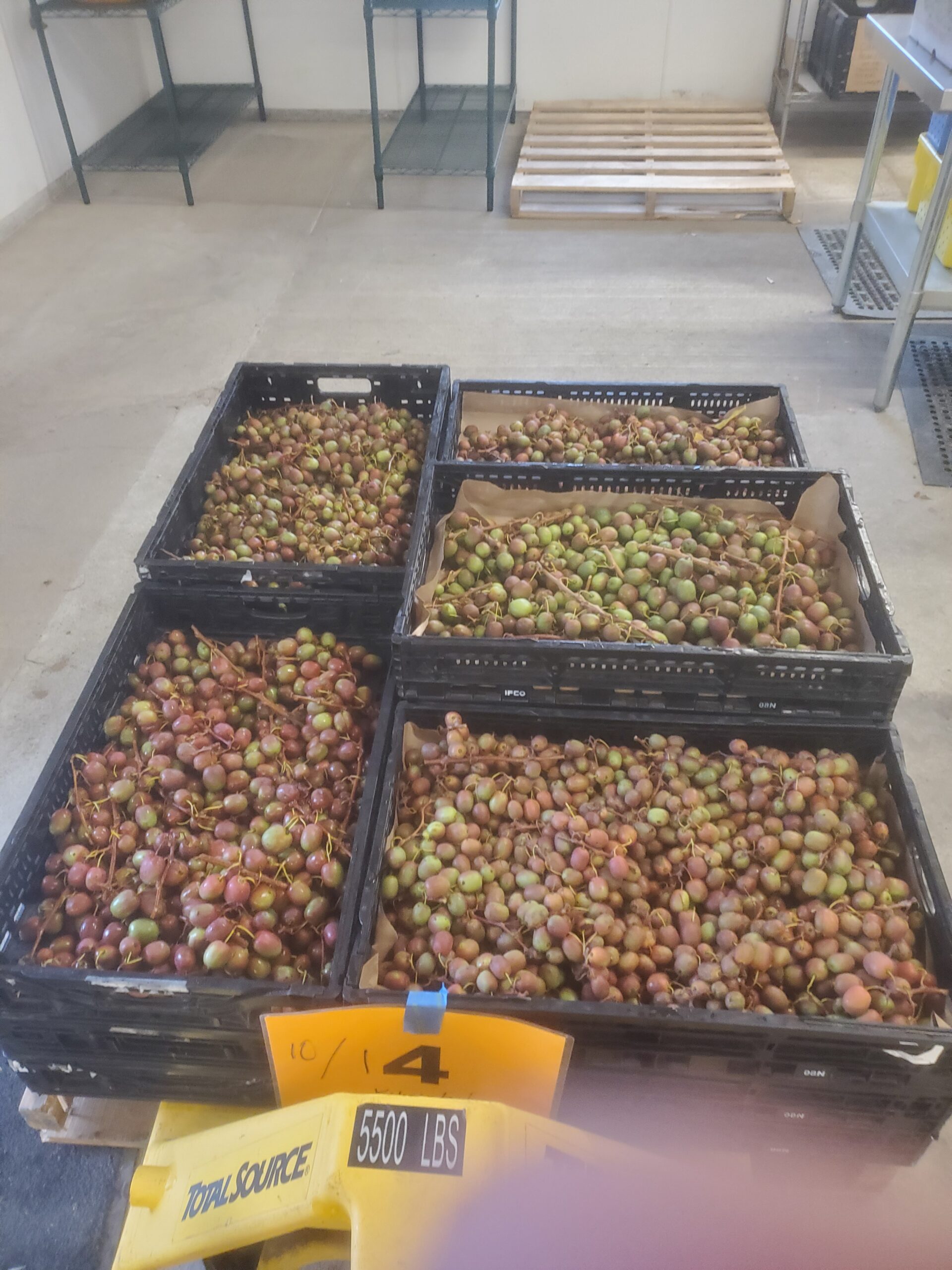
Fall color in the grapes
This week we’re wrapping up our last big picks on Jonagold, Melrose, Galarina, Enterprise Apples, Uta Pears and Kiwi Berries. There’s likely to be a final cleanup pick next week on Melrose, and Medlar to harvest in a few weeks here, but beyond that we are at the very tail end of 2024’s harvest. We’ve seen great improvements in apple size and quality this year. This can be primarily attributed to the implementation of netting for insect exclusion and the absence of drought conditions this season (allowing for larger fruit). We’ve also had a banner year for kiwis. We’ve harvested 600+lbs off of just 2x 100ft rows. Transitioning out of harvest means it’s time to start packing up nets and irrigation headers , as well as catching dry windows to chip away at the long list of cleanup tasks such as mowing, postharvest sprays, weedwhacking and trellis fixes. As things slow down for the season, we will likely reduce the frequency of these updates until things pick back up next spring. Thanks for reading this year.
Fruit/Bud/Tree Development
- Leaf drop is nearly complete in Lynden blue grapes and kiwis with other grapes, ribes and peaches close behind. In about a month here, I expect most of the orchard will be free of leaves and looking properly dormant.
- We’re only a couple weeks away from applying dormant copper sprays on stone and pome fruit. The purpose of these sprays is to eliminate overwintering disease innoculum and protect the trees during wet winter conditions which are conducive to disease development. We also apply a spray of dormant oil after harvest to reduce overwintering insect pest pressure.

The last of the Melrose finishing coloring up

Part of last week’s Kiwi harvest
Pest & Disease
- Fortunately, we finished the majority of harvest before this weekend’s wind storm and didn’t lost much fruit to wind as a result. That said, the wind did some damage to older wooden trellis posts that we likely due for replacement.
- Once apple leaves have completely dropped, we will rake and mow leaves to help any apple scab innoculum decompose before next spring.
- The winter also provides an opportunity to consider removal of potentially problematic trees in the perimeter of the orchard. These trees include seedling cherries/plums and unmanaged apples/crabapples which can be hosts for pests/disease that impact production.

